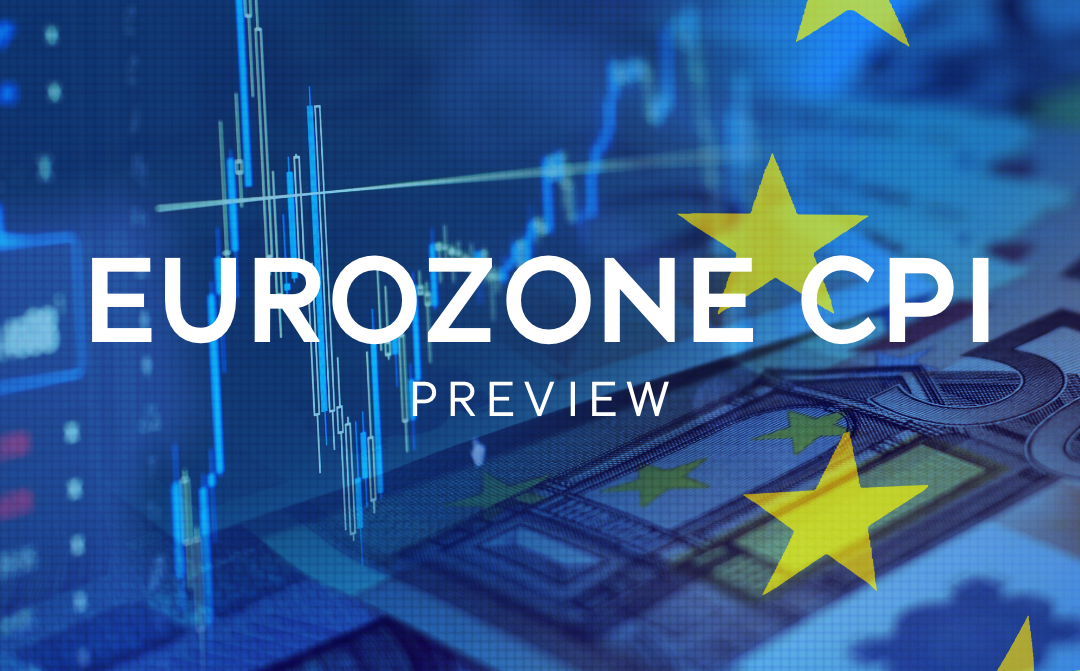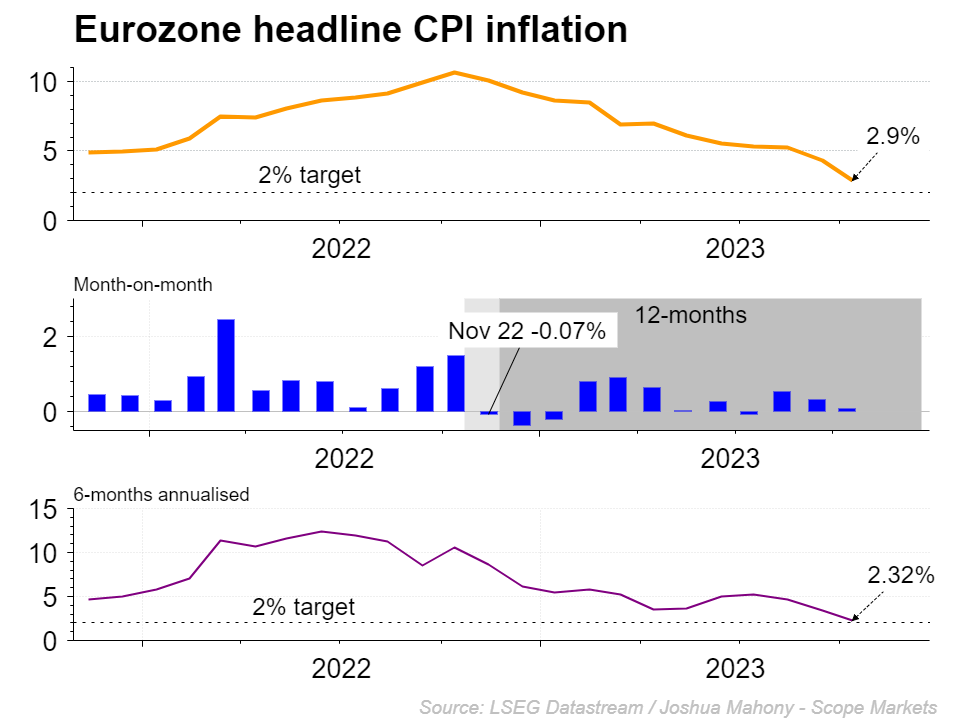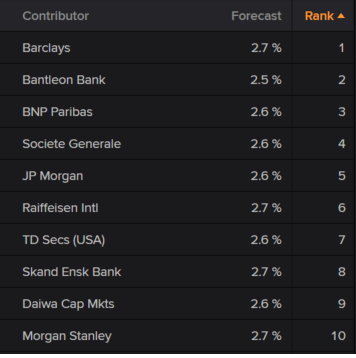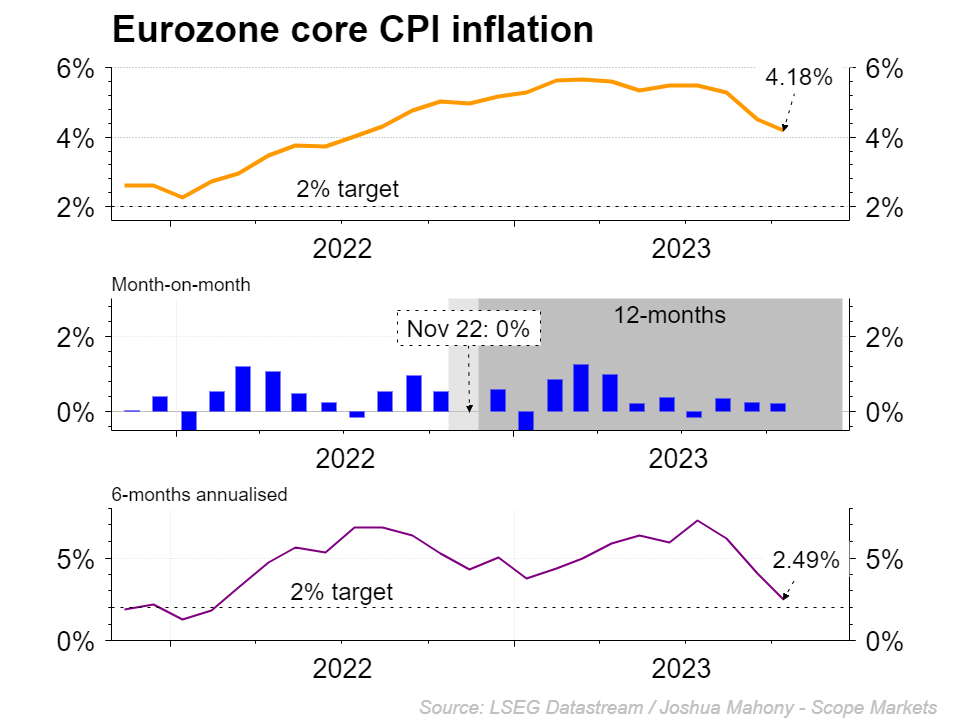Eurozone CPI Preview: Energy decline helping to clear the pathway towards target

What and when
Thursday sees the latest eurozone inflation data released, bringing the potential for major euro volatility as markets adjust their expectations of around the timing of a 2024 rate cut from the ECB. The past two-years has seen plenty of swings in the inflation rate, with October 2022 seeing the headline CPI rate peak out at 10.6%. Thankfully it appears to be the case that inflation pressures are relatively under control for now, with easing energy prices and contractionary PMI surveys highlighting expectation of further disinflation over the coming period. The question for markets will be whether we see that trend continue to hammer home the notion that we could soon see the bank begin the process of normalizing interest rates.

Source: TradingEconomics
Below we can see the dramatic decline in headline inflation compared with many of the major economies, where the eurozone rate has gone from experiencing one of the highest rates of CPI to the lowest. Markets expect to see that continue apace, with a decline from 2.9% to 2.7% anticipated. What is noticeable here is that inflation in Australia and New Zealand remains well above their counterparts in Europe and America. For now, this helps partially justify the outperformance we have seen for those currencies of late. Additional weakness in terms of eurozone inflation would point towards the potential for further EURNZD and EURAUD upside.

Looking at the breakdown for the headline inflation gauge, we can see that the replacement of the November 2022 figure of -0.07% means that we need to see a sub-zero monthly figure to drive the annual reading lower. This may seem a difficult task, but the headline rate will be helped on its way thanks to significant declines across both gas and crude oil this month. With that in mind, there is a good chance we see inflation move lower despite base effects creating a difficult task compared with last month, when the October 2022 figure of 1.5% fell off. Notably, the annualized inflation data seen over the past six-months does signal a potential return to target by the mid-point of 2024, with another low inflation reading adding to that story. Devoid of a spike in energy prices, things look to be moving on a good course for headline inflation to provide the basis for a first ECB rate cut before long.

Interestingly, while markets are predicting a figure around 2.7%, there are a notable amount of 2.6% predictions from some of the most reliable contributors according to Refinitiv. With six of the top 10 calling for a figure of 2.6% or 2.5%, could we be due a greater-than-expected decline this time around?

Source: Refinitiv
Turning to the core figure, things look somewhat more difficult as we strip out the energy factor. Last November saw a monthly figure of 0%, which highlights the relatively high difficulty in driving any meaningful decline in the annual core CPI figure. Nonetheless, markets are expecting to see another decline in this key metric, with the move back towards target likely to come in the midpoint of 2024 given the chunky monthly figures evident in February, March and April. There is a good chance we see the disinflation pathway ease at some point over the next few readings, especially when considering the -0.7% January figure. Nonetheless, the six-month annualized rate highlights how we appear to have transitioned into a pathway that will see core inflation back within touching distance of 2% by the midpoint of next year. As long as we continue to see 0.2% or less per month, things remain on track.

Looking at market expectations, the question from here is around the timing of the rate cuts from the ECB, with markets no longer expecting further upside for rates. The inflation survey will have an impact on market expectations for this initial rate cut, which is currently priced in for April (60% chance). That puts the ECB in the running to be the earliest back to begin the easing process, in part due to the economic concerns within the region. Further disinflation could help drive home the notion that we could soon see the eurozone reversing its course in a bid to drive economic activity higher.

How to trade the eurozone inflation report
With all this in mind, markets appear to be braced for a fresh reminder of the continued confidence that the ECB have the eurozone economy on track to bring inflation back down to target in mid-2024. Should we see headline and core head lower as forecast, it would likely drive additional upside for the DAX in particular given the potential benefits the German economy would feel once interest rates are cut back. In terms of the euro, things are a little more complicated. On one side, a weakening inflation rate would signal easier monetary policy and thus potential EUR weakness. However, comparisons against the dollar also add in the risk sentiment aspect, with further disinflation bringing upside for stocks, USD weakness, and thus EURUSD strength. As such, EURGBP, EURAUD or EURNZD would provide a better target for those looking to trade the euro around this release. Inflation figures notably higher than expected could drive euro strength for these pairs, while a notable decline in these CPI metrics could spark euro weakness.
Disclaimer: This material is a marketing communication and shall not in any case be construed as an investment advice, investment recommendation or presentation of an investment strategy. The marketing communication is prepared without taking into consideration the individual investors personal circumstances, investment experience or current financial situation. Any information contained therein in regardsto past performance or future forecasts does not constitute a reliable indicator of future performance, as circumstances may change over time. Scope Markets shall not accept any responsibility for any losses of investors due to the use and the content of the abovementioned information. Please note that forex trading and trading in other leveraged products involves a significant level of risk and is not suitable for all investors.







